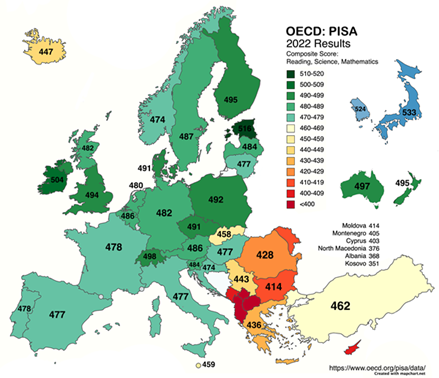What can we learn from Estonia and Ireland's PISA results?

The 2022 PISA survey focused on mathematics, with reading, science and creative thinking as minor areas of assessment. Success was measured not only by scores, but also by the reduction in equity gaps between students from diverse backgrounds.
Estonia's achievements
Estonia surpassed the OECD average in mathematics, reading and science and sits at the top of European results. However, all three subjects show a performance pattern of initial rise followed by decline.
Estonia's success is attributed to skilled teachers and trust in educators. The country's national curriculum and the high level of autonomy it gives schools are seen as important enablers of its success. However, challenges loom large – the success story is threatened by a lack of teachers, heavy workloads and low salaries.
Ireland's triumphs
Meanwhile, students in Ireland also outperformed the OECD average in mathematics, reading and science. Ireland's success is noteworthy in narrowing the gap in mathematics performance between the top and bottom 25% of students in terms of socio-economic status. In reading, Ireland excelled above 75 other countries, behind only Singapore.
Image: OECD 2023
Lessons learnt: autonomy, equity and transformation
These examples highlight the importance of autonomy and equity in education. Estonia's journey shows the risks of neglecting teacher welfare, while Ireland's progress in reducing socio-economic disparities confirms the transformative power of targeted interventions. These countries serve as guiding examples, showing policymakers the importance of prioritising teacher support and equitable access to education to offer a brighter future to European students.
Further reading
Additional information
-
Education type:School Education
-
Target audience:TeacherHead Teacher / PrincipalPedagogical AdviserTeacher EducatorGovernment staff / policy makerResearcher
-
Target audience ISCED:Lower secondary education (ISCED 2)Upper secondary education (ISCED 3)

